#XR Applications
Explore tagged Tumblr posts
Text
What is Immersive Technology? A Comprehensive Guide to Immersive Technology 2025

Immersive technology refers to the suite of technologies that create a simulated or enhanced reality by engaging one or more of the human senses. These technologies enable users to interact with digital environments in ways that feel natural and intuitive, often blurring the line between the physical and virtual worlds. As we approach 2025, immersive technology is poised to revolutionize industries such as education, healthcare, entertainment, retail, and more.
The Core Components of Immersive Technology
Virtual Reality (VR): VR immerses users in entirely digital environments, often requiring specialized headsets like the Oculus Quest or HTC Vive. It’s widely used in gaming, training simulations, and virtual tours.
Augmented Reality (AR): AR overlays digital elements onto the physical world. Think of applications like Pokémon GO or AR filters on social media. Devices such as smartphones, tablets, and AR glasses enable AR experiences.
Mixed Reality (MR): Combining elements of VR and AR, MR allows real and virtual objects to interact seamlessly. For example, Microsoft’s HoloLens is a popular MR device.
Extended Reality (XR): XR is an umbrella term that encompasses VR, AR, and MR, signifying any form of immersive technology that extends or modifies reality.
360-Degree Content: This involves panoramic images or videos that allow users to explore a scene from all angles. Commonly used in virtual tours and real estate.
Why Immersive Technology Matters in 2025
The year 2025 is expected to mark a significant milestone for immersive technology, driven by advancements in hardware, software, and connectivity. Here’s why it’s gaining momentum:
Enhanced Hardware: Lightweight, affordable headsets and AR glasses are making immersive experiences more accessible.
5G Connectivity: Faster internet speeds and lower latency enable seamless streaming of high-quality immersive content.
AI Integration: Artificial intelligence enhances the realism of simulations, making them more responsive and interactive.
Increased Adoption: Businesses and educational institutions are increasingly leveraging immersive technology for training, marketing, and engagement.
Applications of Immersive Technology in 2025
Education: Immersive classrooms powered by VR and AR offer students engaging ways to learn complex subjects, from history to medical procedures.
Healthcare: Surgeons can practice in VR environments, while AR aids in diagnostics and minimally invasive procedures.
Entertainment: The gaming and film industries are adopting VR and AR to deliver highly engaging experiences.
Retail: Virtual try-ons and immersive shopping experiences are transforming the way consumers interact with brands.
Remote Work: Virtual offices and AR collaboration tools are bridging the gap for distributed teams.
Benefits of Immersive Technology
Enhanced User Engagement: Immersive experiences capture attention and improve memory retention.
Cost-Effective Solutions:��Training and prototyping in virtual environments reduce expenses and risks.
Accessibility: Immersive tools make specialized knowledge and experiences more widely available.
Challenges of Immersive Technology
While the future looks promising, several hurdles must be overcome:
High Development Costs: Creating immersive experiences can be expensive.
Privacy Concerns: The data collected by immersive devices raises security issues.
User Fatigue: Prolonged use of immersive technologies may lead to discomfort.
Immersive Technology 2025: What’s Next?
The immersive technology landscape is evolving rapidly. By 2025, we can expect:
Better Accessibility: Affordable devices will make these technologies more mainstream.
Seamless Integration: Immersive tools will become a natural part of daily life and work.
Advanced Applications: From smart cities to personalized healthcare, the possibilities are limitless.
How to Prepare for Immersive Technology 2025
Stay Updated: Follow industry trends and updates to understand the latest advancements.
Upskill: Learn skills like 3D modeling, AR development, or immersive content creation.
Adopt Early: Businesses should consider pilot projects to test the feasibility of immersive solutions.
Conclusion
Immersive technology is reshaping the way we interact with the world, offering endless possibilities across industries. As we move toward 2025, the integration of VR, AR, and MR into daily life will become increasingly seamless. By staying informed, upskilling, and adopting these technologies early, individuals and organizations can unlock their full potential. The future of immersive technology is bright, and it’s time to embrace the transformation.
Content Source - https://medium.com/@priyankapandey08/what-is-immersive-technology-a-comprehensive-guide-to-immersive-technology-2025-eefa55b8f22a
#Immersive Technology 2025#Virtual Reality#Augmented Reality#Mixed Reality#Extended Reality#Immersive Experiences#Future of Technology#AR and VR Trends#XR Applications#Immersive Technology Benefits#tagbin#writers on tumblr#artificial intelligence#technology
0 notes
Text
2024–2025: Extended Reality (XR): Creating the Future of Digital Interaction

Virtual reality (VR), augmented reality (AR), and mixed reality are all included under the umbrella term extended reality (XR) (MR). These innovations are changing the way we engage with technology, work, and pass our time since they combine the real and virtual worlds. As 2024 and 2025 approach, XR is set to make major progress and have a profound effect on a variety of industries as well as daily living. This article examines the state of XR today, what developments to anticipate in the years to come, as well as the opportunities and challenges that lie ahead.
1.Knowing What Extended Reality (XR) Is ?
Understanding XR's definition and operation is crucial before moving forward:
Virtual Reality (VR): VR immerses users in a fully digital environment through the use of headsets that simulate a computer-generated space and obscure the real world. In order to interact with this environment, users can use gloves, controllers, or other gadgets.
Digital content is superimposed on the physical world through Augmented Reality (AR)**. Contrary to virtual reality, augmented reality (AR) augments the real world by introducing digital elements that can be viewed through gadgets like smartphones or AR glasses, such as images, videos, and 3D models.
Mixed Reality (MR): MR combines real-time interactions between digital and physical elements in a manner similar to that of VR and AR. This enables users to interact with digital and physical objects at the same time, frequently with the use of sophisticated headsets that can sense their surroundings.
XR's Present Situation in 2024
By 2024, XR technology will have advanced significantly, and a number of applications will have revolutionized sectors including gaming, healthcare, education, and retail. Prominent tech firms like Meta (previously Facebook), Microsoft, Apple, and Google are making significant investments in XR and creating new hardware and software to push the limits of these technologies.
Tube Magic - AI Tools For Growing on YouTube Software (download now)
First, XR Hardware Developments
The success of XR experiences depends on the hardware that powers them. We may anticipate a number of significant advancements in this field in 2024–2025:
More robust and cozy headphones: Many of the early VR and AR headsets were heavy and difficult to wear for extended periods of time. Better weight distribution, lighter materials, and more ergonomic designs have been made possible by recent advancements. By 2024–2025, the next generation of headsets should be even more comfortable, enabling users to interact with XR for extended periods of time without experiencing any discomfort.
Enhanced Visuals and Resolution: Producing realistic and immersive visuals has proven to be one of the main challenges in XR. We can anticipate major advancements in display technology in 2024–2025, including sharper colors, faster refresh rates, and higher resolutions. XR experiences will become more engaging and lifelike as a result.
Better Tracking and Interaction: A convincing XR experience depends on precise tracking of the user's movements and interactions. Advances in haptic feedback, cameras, and sensors will make it possible for XR environments to interact with users more naturally and precisely in the years to come.
Standalone Devices: The trend is shifting toward standalone VR and AR devices that don't require external hardware, whereas earlier models frequently required robust PCs or consoles. This will increase XR's usability and accessibility for a larger group of users.
2. The Development of XR Platforms and Software
Software and platforms play an equally important role in providing compelling XR experiences as hardware does. We may anticipate a number of developments in this field in 2024–2025:
More Advanced Tools for Creating Content: There will be an increasing need for top-notch content as XR gains traction. Developers, artists, and designers will find it simpler to produce immersive XR experiences with the help of new and enhanced content creation tools. These instruments will probably have more user-friendly interfaces, features for AI-assisted design and improved workflow integration.
Cross-Platform Compatibility: One of XR's problems has been the fragmentation of platforms, as various devices have different needs when it comes to content and software. More efforts to achieve cross-platform compatibility, which will make it easier to share and enjoy content across various devices and operating systems, should be made in 2024–2025.
AI and ML Integration: The future of XR is expected to be heavily influenced by both Artificial Intelligence (AI) and Machine Learning (ML). With the use of these technologies, experiences can become more adaptive and personalized, allowing the XR environment to react to the user's choices and actions in a clever way.
Tube Magic - AI Tools For Growing on YouTube Software (download now)
Cloud-Based XR: Rather than depending exclusively on local hardware, cloud computing is becoming more and more significant in XR. It allows complex processing tasks to be offloaded to powerful servers. This may result in XR environments that are more expansive and detailed, as well as increase accessibility for users with less powerful devices.

3. XR's Use in Different Industries
XR has a wide range of potential applications, and in 2024–2025, these technologies will continue to have an impact on several industries:
Games and Entertainment: One of the first industries to embrace XR, especially VR, was gaming. We may anticipate even more interactive and immersive gaming experiences where players can actually feel like they are inside the game as XR technology advances. Beyond video games, virtual reality (XR) is revolutionizing other entertainment mediums like interactive films, virtual concerts, and immersive storytelling.
Healthcare: By offering new approaches to patient treatment, surgical planning, and professional training, XR is transforming the healthcare industry. AR can help during real surgeries by superimposing vital information onto the patient's body, while VR simulations enable surgeons to practice intricate procedures in a risk-free setting. These applications will proliferate in 2024–2025, enhancing patient outcomes and care quality.
Education and Training: XR offers immersive and interactive learning environments, which presents a huge potential for the field. Students can interact with 3D models of difficult concepts, perform virtual science experiments, and explore historical locations in virtual reality. XR can replicate real-world situations in corporate training, giving staff members practical experience in a secure setting.
Retail and E-commerce: XR is being used by retailers to improve the in-store and online shopping experience. Customers can virtually try on clothing and see how furniture would look in their homes thanks to augmented reality. We may anticipate seeing more retailers use XR in 2024–2025, resulting in more interesting and customized shopping experiences.
Architecture and Real Estate: XR is revolutionizing the way real estate agents and architects plan and present their buildings. Virtual reality (VR) allows clients to take virtual tours of buildings before they are built, which helps them visualize the finished product. In order to help architects and builders ensure accuracy and make changes in real-time, augmented reality (AR) can also be used on-site to overlay digital designs onto physical spaces.
Collaboration and Remote Work: The COVID-19 pandemic has expedited the shift toward remote work, which has brought attention to the need for improved digital collaboration tools. With the help of XR, it is possible to set up virtual conference rooms where team members can communicate just like they would in person. This can lessen the need for travel and promote more productive teamwork.
4. Difficulties and Things to Take Into Account
Although XR has a bright future, there are a few issues that need to be resolved as we approach 2024 and 2025:
Cost and Accessibility: Expensive hardware and software are frequently needed for high-quality XR experiences, which may prevent their broad adoption. As the technology advances, it will be necessary to take steps to lower expenses and increase XR's accessibility for a larger range of people.
Privacy and Security: A lot of personal data, such as eye tracking, movement patterns, and environmental data, are frequently collected during XR experiences. It is imperative to guarantee the confidentiality and integrity of this information, particularly as XR permeates more aspects of daily life.
Tube Magic - AI Tools For Growing on YouTube Software (download now)
Health and Safety: Extended use of VR and AR can cause discomfort, motion sickness, and eye strain. The ergonomics of XR devices must be further improved, and long-term use's effects on health must be taken into account by developers and manufacturers.
Content Quality and Curation: As more content is produced for XR platforms, it will be more crucial than ever to guarantee excellent user experiences. Low-quality or badly designed content can detract from the overall experience and prevent XR from being widely adopted. Effective curation will also be required to assist users in finding the best content.
Impacts on Society and Ethics: There will be major ethical and societal ramifications when XR is widely used. These include worries about social interactions, digital addiction, and the possibility of XR being abused or used manipulatively. In order to guarantee that XR advances in a way that benefits society overall, it is imperative that these issues be addressed in a proactive manner.

5. XR's Future: A Novel Reality
Looking ahead to 2024–2025, it's evident that XR is poised to become a widely used technology that will fundamentally alter our interactions with both the digital and physical worlds. Innovations in applications, software, and hardware will produce more meaningful, immersive, and interactive experiences in a variety of industries.
XR has enormous potential to change everything from the way we work and learn to the way entertainment and healthcare are provided. But in order to fully realize this potential, issues with cost, accessibility, privacy, and ethics must be resolved.
As XR develops further, new avenues for innovation, cooperation, and creativity will become possible. There will be new ways to experience and engage with our surroundings as the boundaries between the physical and digital worlds become increasingly hazy. XR is going to have a big impact on how technology develops in the future, whether it's through new kinds of digital interaction, improving our real-world experiences, or exploring virtual worlds.
To sum up, extended reality is a paradigm shift that will change how we interact with the digital world rather than merely being a technology fad. The developments in XR will take us closer to a time when the lines separating reality from imagination will blur as we approach 2024–2025.
Tube Magic - AI Tools For Growing on YouTube Software (download now)
0 notes
Text

Experience GITEX Europe 2025: AI, Healthtech & Custom Software Development Solutions
Explore the future of Healthtech, AI, and custom software development at GITEX Europe 2025 in Berlin. Join 40,000+ tech leaders and discover cutting-edge innovations, including AR/VR, cybersecurity, cloud, and healthcare IT. Visit DreamSoft4u’s booth for next-gen software services and intelligent digital solutions.
#GITEX Europe 2025#custom software development#Healthtech#AI in healthcare#AI development services#healthcare IT solutions#DreamSoft4u#Messe Berlin tech expo#custom application development#software development company#XR technology#cybersecurity solutions#quantum computing#cloud computing#smart industries#tech expo Europe#digital transformation#software services#healthcare software development#generative AI#AR/VR in healthcare#sustainable tech#digital health solutions#custom healthcare software#AI-powered software#technology trends 2025
1 note
·
View note
Text
視界再擴展:Meta與普林斯頓大學創新全像技術,開拓XR顯示新境界
近期,Meta 的 Reality Labs Research 團隊攜手普林斯頓大學的研究者,取得了顯著進展,開發出新型的「神經視場擴展器」,大幅提升了全像顯示技術的視野和影像質量。這項研究克服了現有空間光調制器(SLM)的解析度限制,使得全像顯示技術在虛擬現實(VR)和擴增現實(AR)應用中的潛力得到極大擴展。 傳統的SLM技術受限於其小角度衍射現象,限制了顯示器的視野寬度和大小。然而,神經視場擴展器通過從自然圖像數據集中學習,實現了更高的衍射角度和超寬的視野,同時保持了高保真的影像質量和緊湊的設計。這種技術使全像顯示能夠在保持人眼視網膜解析度的條件下,將視野擴展至原來的64倍,並在全色彩自然圖像上達到超過29…

View On WordPress
#AR應用#神經視場擴展器#虛擬實境#虛擬實境遊戲#虛擬實境資訊#META#vr#VR applications#vr news#vr news today#VR應用#XR技術#全像顯示技術#擴增實境#普林斯頓大學#沉浸式技術#三維全息
0 notes
Text

NofNAweek for 2025!
The first day is "fanon meets canon" which... can't be so applicable to me. The alternative was drawing my favorite background character, and after thinking about it, I drew XR meeting his little sister, XG, for the first time. It wasn't the first time they interacted, though...
56 notes
·
View notes
Text
Infrastructure for Teamwork, a.k.a. Version Control
Working together on a game is quite difficult. How do you make sure everyone is on the same page?
You could send zips with assets and code between people, but that is slow, cumbersome, and very error-prone.
This is why Source Control software was invented. With Source Control, you can store the project files on a server, and everyone who wants to work on the project files, can download the project from the server. Once they're done with their changes, they send them back to the server. Then the other people can get those changes from the server again.
There are many different Source Control softwares. Probably the best-known one is git. (Source Control, Version Control, Revision Control all mean essentially the same thing.) Git is very good for working on projects that are all just plain-text code. However, it kind of falls flat when it needs to deal with binary assets, like textures, models, and sounds. Unreal Engine Scenes and Blueprints are also binary files. So if you don't use C++, but only Blueprints, basically your entire project is binary files.
This is why I went looking for a different Version Control Software that can handle this better. At my internship, I used Subversion, which is said to work better with binary assets, but in my experience then, it still wasn't exactly great. Though that might also have been due to the fact that they barely used any of its fancier features there.
Unreal Engine itself recommends using Perforce Helix Core. (Perforce is the company, Helix Core is the VCS, but the term "Perforce" is usually used to refer to the VCS itself, due to historical reasons. Source) So I looked into it, and indeed, it seemed very suitable!
So we requested a computer from the XR Lab to use as server for this project, and I installed the Helix Core Server on it.


It was surprisingly easy to install!
I then downloaded the Helix Core Client application on my laptop, and connected to the server. The setup there took a while, because there was a lot to learn. But in the end, I did it!
Sadly, Perforce is not free, so we are forced to use the free version, which is limited to a maximum of five users. We are with ten people, so we had to choose a few "representatives" who would actually put the things everyone made into the project. We requested an educational licence from Saxion, but got told to wait. Now that the project is over, we still don't have it. We also requested an educational licence from Perforce itself, directly, but we have still not got a response. But we made do with the limitations we got.
I wrote a guide for my teammates on how to set up a workspace for the project with Perforce, and improved it multiple times based on user testing and feedback. (I sat next to my teammates while they were following the guide and tried my best to now say anything; to let the guide speak for itself. I would then take note of what went wrong and improved that section of the guide for the next user test.)
Over the months of this project, we all used P4V and Perforce to work together on the project. Due to Perforce's locking system, we never had any merge conflicts! Most of the team actually really enjoyed working with Perforce. Personally, I do miss git, but I acknowledge that for an Unreal Engine project, Perforce is a lot better. And I also found it pretty nice to work with. The documentation was pretty good, and they have a lot of tutorials, guide, and demonstration videos, which have been very helpful during the setup. It's very useful to be able to follow along every single click.
3 notes
·
View notes
Text
Top 10 Emerging Tech Trends to Watch in 2025
Technology is evolving at an unprecedented tempo, shaping industries, economies, and day by day lifestyles. As we method 2025, several contemporary technology are set to redefine how we engage with the sector. From synthetic intelligence to quantum computing, here are the important thing emerging tech developments to look at in 2025.

Top 10 Emerging Tech Trends In 2025
1. Artificial Intelligence (AI) Evolution
AI remains a dominant force in technological advancement. By 2025, we will see AI turning into greater sophisticated and deeply incorporated into corporations and personal programs. Key tendencies include:
Generative AI: AI fashions like ChatGPT and DALL·E will strengthen similarly, generating more human-like textual content, images, and even films.
AI-Powered Automation: Companies will more and more depend upon AI-pushed automation for customer support, content material advent, and even software development.
Explainable AI (XAI): Transparency in AI decision-making becomes a priority, ensuring AI is greater trustworthy and comprehensible.
AI in Healthcare: From diagnosing sicknesses to robot surgeries, AI will revolutionize healthcare, reducing errors and improving affected person results.
2. Quantum Computing Breakthroughs
Quantum computing is transitioning from theoretical studies to real-global packages. In 2025, we will expect:
More powerful quantum processors: Companies like Google, IBM, and startups like IonQ are making full-size strides in quantum hardware.
Quantum AI: Combining quantum computing with AI will enhance machine studying fashions, making them exponentially quicker.
Commercial Quantum Applications: Industries like logistics, prescribed drugs, and cryptography will begin leveraging quantum computing for fixing complex troubles that traditional computer systems can not manage successfully.
3. The Rise of Web3 and Decentralization
The evolution of the net continues with Web3, emphasizing decentralization, blockchain, and user possession. Key factors consist of:
Decentralized Finance (DeFi): More economic services will shift to decentralized platforms, putting off intermediaries.
Non-Fungible Tokens (NFTs) Beyond Art: NFTs will find utility in actual estate, gaming, and highbrow belongings.
Decentralized Autonomous Organizations (DAOs): These blockchain-powered organizations will revolutionize governance systems, making choice-making more obvious and democratic.
Metaverse Integration: Web3 will further integrate with the metaverse, allowing secure and decentralized digital environments.
4. Extended Reality (XR) and the Metaverse
Virtual Reality (VR), Augmented Reality (AR), and Mixed Reality (MR) will retain to improve, making the metaverse extra immersive. Key tendencies consist of:
Lighter, More Affordable AR/VR Devices: Companies like Apple, Meta, and Microsoft are working on more accessible and cushty wearable generation.
Enterprise Use Cases: Businesses will use AR/VR for far flung paintings, education, and collaboration, lowering the want for physical office spaces.
Metaverse Economy Growth: Digital belongings, digital real estate, and immersive studies will gain traction, driven via blockchain technology.
AI-Generated Virtual Worlds: AI will play a role in developing dynamic, interactive, and ever-evolving virtual landscapes.
5. Sustainable and Green Technology
With growing concerns over weather alternate, generation will play a vital function in sustainability. Some key innovations include:
Carbon Capture and Storage (CCS): New techniques will emerge to seize and keep carbon emissions efficaciously.
Smart Grids and Renewable Energy Integration: AI-powered clever grids will optimize power distribution and consumption.
Electric Vehicle (EV) Advancements: Battery generation upgrades will cause longer-lasting, faster-charging EVs.
Biodegradable Electronics: The upward thrust of green digital additives will assist lessen e-waste.
6. Biotechnology and Personalized Medicine
Healthcare is present process a metamorphosis with biotech improvements. By 2025, we expect:
Gene Editing and CRISPR Advances: Breakthroughs in gene modifying will enable treatments for genetic disorders.
Personalized Medicine: AI and big statistics will tailor remedies based on man or woman genetic profiles.
Lab-Grown Organs and Tissues: Scientists will make in addition progress in 3D-published organs and tissue engineering.
Wearable Health Monitors: More superior wearables will music fitness metrics in actual-time, presenting early warnings for illnesses.
7. Edge Computing and 5G Expansion
The developing call for for real-time statistics processing will push aspect computing to the vanguard. In 2025, we will see:
Faster 5G Networks: Global 5G insurance will increase, enabling excessive-velocity, low-latency verbal exchange.
Edge AI Processing: AI algorithms will system information in the direction of the source, reducing the want for centralized cloud computing.
Industrial IoT (IIoT) Growth: Factories, deliver chains, and logistics will advantage from real-time facts analytics and automation.
Eight. Cybersecurity and Privacy Enhancements
With the upward thrust of AI, quantum computing, and Web3, cybersecurity will become even more essential. Expect:
AI-Driven Cybersecurity: AI will come across and prevent cyber threats extra effectively than traditional methods.
Zero Trust Security Models: Organizations will undertake stricter get right of entry to controls, assuming no entity is inherently sincere.
Quantum-Resistant Cryptography: As quantum computer systems turn out to be greater effective, encryption techniques will evolve to counter potential threats.
Biometric Authentication: More structures will rely on facial reputation, retina scans, and behavioral biometrics.
9. Robotics and Automation
Automation will hold to disrupt numerous industries. By 2025, key trends encompass:
Humanoid Robots: Companies like Tesla and Boston Dynamics are growing robots for commercial and family use.
AI-Powered Supply Chains: Robotics will streamline logistics and warehouse operations.
Autonomous Vehicles: Self-using automobiles, trucks, and drones will become greater not unusual in transportation and shipping offerings.
10. Space Exploration and Commercialization
Space era is advancing swiftly, with governments and private groups pushing the boundaries. Trends in 2025 include:
Lunar and Mars Missions: NASA, SpaceX, and other groups will development of their missions to establish lunar bases.
Space Tourism: Companies like Blue Origin and Virgin Galactic will make industrial area travel more reachable.
Asteroid Mining: Early-level research and experiments in asteroid mining will start, aiming to extract rare materials from area.
2 notes
·
View notes
Text
Rajasthan AVGC-XR Policy 2024 Launched: A Vision for Digital Creativity by Col Rajyavardhan Rathore

Rajasthan has taken a revolutionary step in advancing its digital and creative industries by launching the AVGC-XR Policy 2024. This initiative focuses on Animation, Visual Effects, Gaming, Comics, and Extended Reality (AR/VR) — collectively referred to as AVGC-XR. Colonel Rajyavardhan Rathore, a visionary leader and former Union Minister, played a pivotal role in unveiling this transformative policy aimed at positioning Rajasthan as a hub for creative innovation and technology.
What is the AVGC-XR Policy 2024?
The AVGC-XR Policy 2024 is a strategic framework designed to boost the digital content creation ecosystem. It seeks to provide a robust infrastructure, foster talent development, and attract investments in the AVGC-XR sector, which is rapidly emerging as a significant contributor to global economies.
Key Objectives of the Policy
Empowering Talent: Training and upskilling youth in AVGC-XR technologies.
Boosting Employment: Creating thousands of jobs in the animation, gaming, and XR industries.
Encouraging Startups: Offering incentives for startups and entrepreneurs in the AVGC-XR domain.
Global Collaboration: Promoting Rajasthan as a global outsourcing hub for AVGC-XR services.
Infrastructure Development: Establishing state-of-the-art studios, XR labs, and gaming zones.
Col Rajyavardhan Rathore’s Role in the Launch
Col Rathore, known for his forward-thinking approach, has always advocated for leveraging technology to empower youth and drive economic growth. During the policy launch, he emphasized: “Rajasthan has immense potential to become a leader in the digital creative space. With the AVGC-XR Policy, we aim to nurture talent, attract global investments, and make Rajasthan a powerhouse of innovation.”
Why is the AVGC-XR Sector Important?
The AVGC-XR sector is witnessing exponential growth, with applications in entertainment, education, healthcare, and beyond.
Global Market Potential
The global AVGC-XR industry is projected to reach $350 billion by 2030, making it a lucrative field for investment and innovation.
Opportunities for Youth
With gaming and animation becoming mainstream, this sector offers creative career opportunities for Rajasthan’s youth.
Highlights of the AVGC-XR Policy 2024
1. Financial Incentives
Tax Benefits: Exemptions for AVGC-XR startups and production houses.
Grants: Funding support for content creation and research projects.
Subsidies: Subsidized land and infrastructure for setting up studios and XR labs.
2. Education and Training
Partnerships with universities and institutes to introduce AVGC-XR courses.
Establishment of AVGC academies to upskill students and professionals.
Collaboration with global tech companies for specialized training programs.
3. Innovation Hubs
Development of AVGC-XR clusters in Jaipur and Jodhpur.
Creation of co-working spaces for startups and freelancers in this domain.
4. Promoting Indigenous Content
Encouraging creators to develop content rooted in Rajasthan’s culture, history, and folklore.
Support for local artists and storytellers to explore digital mediums.
Impact of the Policy on Rajasthan
The AVGC-XR Policy 2024 is expected to transform Rajasthan into a creative and technological hub, bringing in economic and cultural benefits.
Economic Growth
Increased investments and revenue from global outsourcing projects.
Boost in tourism through XR-based cultural and heritage experiences.
Youth Empowerment
Creation of 20,000+ jobs in the next five years.
Opportunities for budding artists, coders, and innovators to showcase their talent globally.
Global Recognition
Establishing Rajasthan as a destination for AVGC-XR outsourcing and production.
Col Rathore’s Vision for the Future
Col Rathore envisions this policy as a step toward making Rajasthan a leader in the digital economy. His focus on blending technology with Rajasthan’s rich heritage aims to create a unique identity for the state in the global AVGC-XR landscape.
In his words: “The AVGC-XR Policy 2024 is not just about technology; it’s about empowering our youth to dream bigger and achieve more while preserving our cultural roots.”
Rajasthan’s Leap into the Digital Future
The launch of the Rajasthan AVGC-XR Policy 2024 is a bold move toward transforming the state into a global hub for digital creativity. With visionary leaders like Col Rajyavardhan Rathore at the forefront, Rajasthan is set to embrace a future of innovation, employment, and cultural preservation.
This policy is not just an initiative; it is a blueprint for progress, merging tradition with technology to create a brighter tomorrow.
2 notes
·
View notes
Text

Open-source Tools and Scripts for XMLTV Data
XMLTV is a popular format for storing TV listings. It is widely used by media centers, TV guide providers, and software applications to display program schedules. Open-source tools and scripts play a vital role in managing and manipulating XMLTV data, offering flexibility and customization options for users.
In this blog post, we will explore some of the prominent open-source tools and scripts available for working with xmltv examples.
What is XMLTV?
XMLTV is a set of software tools that helps to manage TV listings stored in the XML format. It provides a standard way to describe TV schedules, allowing for easy integration with various applications and services. XMLTV files contain information about program start times, end times, titles, descriptions, and other relevant metadata.
Open-source Tools and Scripts for XMLTV Data
1. EPG Best
EPG Best is an open-source project that provides a set of utilities to obtain, manipulate, and display TV listings. It includes tools for grabbing listings from various sources, customizing the data, and exporting it in different formats. Epg Best offers a flexible and extensible framework for managing XMLTV data.
2. TVHeadend
TVHeadend is an open-source TV streaming server and digital video recorder for Linux. It supports various TV tuner hardware and provides a web interface for managing TV listings. TVHeadend includes built-in support for importing and processing XMLTV data, making it a powerful tool for organizing and streaming TV content.
3. WebGrab+Plus
WebGrab+Plus is a popular open-source tool for grabbing electronic program guide (EPG) data from websites and converting it into XMLTV format. It supports a wide range of sources and provides extensive customization options for configuring channel mappings and data extraction rules. WebGrab+Plus is widely used in conjunction with media center software and IPTV platforms.
4. XMLTV-Perl
XMLTV-Perl is a collection of Perl modules and scripts for processing XMLTV data. It provides a rich set of APIs for parsing, manipulating, and generating XMLTV files. XMLTV-Perl is particularly useful for developers and system administrators who need to work with XMLTV data in their Perl applications or scripts.
5. XMLTV GUI
XMLTV GUI is an open-source graphical user interface for configuring and managing XMLTV grabbers. It simplifies the process of setting up grabber configurations, scheduling updates, and viewing the retrieved TV listings.
XMLTV GUI is a user-friendly tool for users who prefer a visual interface for interacting with XMLTV data.
Open-source tools and scripts for XMLTV data offer a wealth of options for managing and utilizing TV listings in XML format. Whether you are a media enthusiast, a system administrator, or a developer, these tools provide the flexibility and customization needed to work with TV schedules effectively.
By leveraging open-source solutions, users can integrate XMLTV data into their applications, media centers, and services with ease.
Stay tuned with us for more insights into open-source technologies and their applications!

Step-by-Step XMLTV Configuration for Extended Reality
Extended reality (XR) has become an increasingly popular technology, encompassing virtual reality (VR), augmented reality (AR), and mixed reality (MR).
One of the key components of creating immersive XR experiences is the use of XMLTV data for integrating live TV listings and scheduling information into XR applications. In this blog post, we will provide a step-by-step guide to configuring XMLTV for extended reality applications.
What is XMLTV?
XMLTV is a set of utilities and libraries for managing TV listings stored in the XML format. It provides a standardized format for TV scheduling information, including program start times, end times, titles, descriptions, and more. This data can be used to populate electronic program guides (EPGs) and other TV-related applications.
Why Use XMLTV for XR?
Integrating XMLTV data into XR applications allows developers to create immersive experiences that incorporate live TV scheduling information. Whether it's displaying real-time TV listings within a virtual environment or overlaying TV show schedules onto the real world in AR, XMLTV can enrich XR experiences by providing users with up-to-date programming information.
Step-by-Step XMLTV Configuration for XR
Step 1: Obtain XMLTV Data
The first step in configuring XMLTV for XR is to obtain the XMLTV data source. There are several sources for XMLTV data, including commercial providers and open-source projects. Choose a reliable source that provides the TV listings and scheduling information relevant to your target audience and region.
Step 2: Install XMLTV Utilities
Once you have obtained the XMLTV data, you will need to install the XMLTV utilities on your development environment. XMLTV provides a set of command-line tools for processing and manipulating TV listings in XML format. These tools will be essential for parsing the XMLTV data and preparing it for integration into your XR application.
Step 3: Parse XMLTV Data
Use the XMLTV utilities to parse the XMLTV data and extract the relevant scheduling information that you want to display in your XR application. This may involve filtering the data based on specific channels, dates, or genres to tailor the TV listings to the needs of your XR experience.
Step 4: Integrate XMLTV Data into XR Application
With the parsed XMLTV data in hand, you can now integrate it into your XR application. Depending on the XR platform you are developing for (e.g., VR headsets, AR glasses), you will need to leverage the platform's development tools and APIs to display the TV listings within the XR environment.
Step 5: Update XMLTV Data
Finally, it's crucial to regularly update the XMLTV data in your XR application to ensure that the TV listings remain current and accurate. Set up a process for fetching and refreshing the XMLTV data at regular intervals to reflect any changes in the TV schedule.
Incorporating XMLTV data into extended reality applications can significantly enhance the immersive and interactive nature of XR experiences. By following the step-by-step guide outlined in this blog post, developers can seamlessly configure XMLTV for XR and create compelling XR applications that seamlessly integrate live TV scheduling information.
Stay tuned for more XR development tips and tutorials!
Visit our xmltv information blog and discover how these advancements are shaping the IPTV landscape and what they mean for viewers and content creators alike. Get ready to understand the exciting innovations that are just around the corner.
youtube
4 notes
·
View notes
Text

Future Trends: The Increasing Popularity of VR CGI in Digital Narratives
As technology improved, one exciting trend is the rising use of VR CGI in digital narratives. This innovative approach immerses audiences in stories like never before, blending virtual reality with stunning computer-generated imagery.
In this post, we will explore how VR CGI is transforming storytelling across various media, including xml epg guide, xmltv generator, and interactive experiences.
Extended Reality (XR), encompassing Virtual Reality (VR), Augmented Reality (AR), and Mixed Reality (MR), is poised to revolutionize the digital narrative landscape by merging the physical and virtual worlds.
As XR technologies advance, they are finding applications across numerous fields, enhancing user experiences and enabling new ways of interaction.
In the realm of digital narratives, this means a transformative shift towards more immersive and interactive storytelling formats.
For instance, interactive narratives will allow audiences to influence the direction of stories through choices, creating a personalized and dynamic storytelling experience. This level of interactivity, supported by gamification elements such as challenges and rewards, will make narratives not only more engaging but also deeply memorable.
Understanding the Popularity of VR CGI in IPTV EPG
The integration of AI in storytelling is set to redefine audience engagement, with AI-generated characters and chatbots improved based on user interactions. This dynamic personalization will tailor stories to individual preferences, enhancing emotional resonance and relevance.
Furthermore, user-generated storytelling platforms are empowering audiences to become storytellers themselves, fostering a rich diversity of narratives and perspectives. This shift is supported by advanced software capabilities that cater to a younger, digitally savvy audience, driving narrative innovation.
Rise of VR CGI in IPTV: Future XMLV EPG Trends
In the context of xmltv epg m3u and Mfiles technology, the use of immersive 360 VR experiences can evoke a strong sense of presence, making viewers feel like participants rather than mere observers. Directing attention in 360 VR storytelling remains a challenge, requiring innovative techniques to guide viewers to key story elements.
However, the potential for non-linear narratives in 360 VR allows viewers the freedom to explore different perspectives and storylines, enhancing the narrative depth and engagement. This integration of VR and CGI within XMLTV blogs can significantly enhance the viewer's experience, making the guide itself a part of an interactive entertainment experience.

Bringing Digital and Physical Worlds Together
Augmented Reality (AR) and Virtual Reality (VR) technologies are pioneering the fusion of digital and physical realms, offering enhanced perceptions and interactions with the real world. AR overlays digital information onto the physical environment in real-time, using sophisticated tracking and rendering to blend virtual elements seamlessly.
This technology has not only captured the public's imagination through applications like Pokémon Go and Snapchat filters but is also expanding into sectors like retail, advertising, and tourism, enhancing user experiences by providing contextual information in an interactive format.
On the other hand, VR immerses users in a completely virtual environment, crafted to deliver a compelling sense of presence through multi-sensory feedback. This technology is employed across various fields including gaming, training simulations, and tourism, where it provides unique, immersive experiences that are profoundly engaging.
In educational settings, VR transforms learning by enabling interactive experiences that improve retention and engagement, such as virtual field trips or complex scientific simulations.
The convergence of AR and VR into Mixed Reality (MR) represents a significant leap towards blending the digital and physical worlds. MR allows for a spectrum of experiences where digital and real-world elements coexist and interact in real-time, offering new possibilities in gaming, entertainment, and beyond.
For instance, in architecture and design, MR can streamline design processes and enhance client presentations by superimposing proposed architectural changes onto existing physical spaces.
In healthcare, MR applications assist in complex surgical procedures by overlaying critical information onto the surgeon’s field of view, improving precision and patient outcomes. This integration of digital and physical realities is not only redefining user experiences but also setting new benchmarks in how we interact with and perceive our environment.
Optimization of VR Applications for XMLTV Generator
Throughout this article, we have traversed the innovative landscapes where virtual reality (VR) CGI and XMLTV converge, offering a glimpse into the future of ultra-immersive storytelling and content presentation in technology blogs.
The integration of VR CGI with XMLTV not only enriches the user experience by providing a dynamic and engaging way to explore program guides but also sets a new bar for the presentation of information.
Crafting content that leverages these technologies invites readers into a world where they are no longer passive consumers but rather active participants in an immersive journey.
The examples and use cases discussed underscore the practical applications and the transformative potential of merging VR CGI with XMLTV, from interactive program previews to enhanced storytelling that deeply resonates with the audience.
Acknowledging the boundless possibilities, it's clear that the amalgamation of VR CGI and XMLTV within technology blogs represents a pioneering step towards redefining digital narratives and user experience.
For content creators and technologists alike, understanding and harnessing this synergy is critical in crafting blogs that not only inform but also mesmerize and engage.
As we look forward, embracing these advancements could very well dictate the success and relevance of digital content within the ever-changing domain of technology and media.
As part of exploring this vast potential and ensuring content remains relevant and engaging, we invite you to uncover the boundless potential of Virtual Reality CGI and elevate your XMLTV Technology Blog by checking out our blog post and experiencing the ease of Entertainment Technology through XMLTV EPG for IPTV Guide.
Want to know more? You can visit this web page and discover the advantages it brings to every tech-savvy individuals and why content creators are captivated by these immersive narratives.
youtube
6 notes
·
View notes
Text
From Static to Spectacular: How 3D Models Breathe Life into AR/VR/XR
In the rapidly evolving landscape of digital technology, augmented reality (AR), virtual reality (VR), and extended reality (XR) have emerged as transformative tools in various industries. From gaming and entertainment to education and healthcare, these immersive experiences are revolutionizing the way we interact with digital content. Central to this revolution are 3D models, which serve as the building blocks for creating rich, engaging, and interactive environments. In this blog, we'll explore how 3D models power AR/VR/XR experiences and the role that 3D asset stores like Znanye play in this dynamic ecosystem.
The Role of 3D Models in AR/VR/XR
Bringing Virtual Worlds to Life
At the heart of any AR, VR, or XR experience are 3D models—detailed, lifelike representations of objects, characters, and environments. These models are meticulously crafted to provide a sense of realism and immersion, which is crucial for creating convincing virtual worlds. Whether it’s a food 3D model in a virtual restaurant or space 3D models for an educational VR experience, the quality and detail of these models significantly impact user engagement and satisfaction.
Enhancing User Interaction
In AR/VR/XR environments, users interact with 3D models in ways that are not possible with traditional 2D interfaces. For example, a 3D model viewer allows users to rotate, zoom, and explore models from different angles, providing a more comprehensive understanding of the object. This interactive element is especially valuable in fields like education and training, where users can engage with complex concepts and scenarios in a hands-on manner.
Customization and Personalization
One of the key advantages of using 3D models in AR/VR/XR is the ability to customize and personalize experiences. Custom 3D models can be created to meet specific requirements, whether it’s designing a unique character 3D model for a game or developing plant 3D models for a landscaping application. This flexibility ensures that the virtual experiences are tailored to the needs and preferences of the users, enhancing their overall engagement and satisfaction.
The Importance of a Robust 3D Asset Store
Accessibility and Variety
A robust 3D asset store is essential for creators looking to develop compelling AR/VR/XR experiences. Platforms like Znanye offer a wide range of 3D objects for sale, from furniture 3D models and jewellery 3D models to more niche items like free 3D furniture models and 3D vehicle models. This variety ensures that creators have access to the specific assets they need to bring their visions to life.
Quality and Professionalism
Professional 3D models available on platforms like Znanye are crafted with attention to detail and high-quality standards, ensuring that they meet the demands of sophisticated AR/VR/XR applications. These models are often created by skilled artists and designers who understand the technical requirements of immersive experiences, resulting in assets that not only look great but also perform well in real-time applications.
Convenience and Efficiency
Online 3D modeling and asset stores streamline the process of acquiring 3D models. Instead of spending countless hours creating models from scratch, creators can simply download 3D models that meet their needs, allowing them to focus on other aspects of development. This efficiency is crucial in fast-paced industries where time and resources are often limited.
Selling Your 3D Models Online
For artists and designers, selling 3D assets online represents a lucrative opportunity. By listing their creations on a 3D model website like Znanye, they can reach a global audience of developers and creators looking for high-quality 3D models. Whether it’s a character 3D model, space 3D models, or any other type of asset, there is a growing market for diverse and innovative 3D models.
Benefits of Selling on a VR Models Store
Selling on a VR models store offers several advantages:
- Exposure: Access to a wide audience of potential buyers.
- Monetization: Earn revenue from your creations.
- Feedback: Receive valuable feedback from users to improve future models.
Conclusion
3D models are the cornerstone of AR/VR/XR experiences, providing the realism, interactivity, and customization that make these technologies so compelling. Platforms like Znanye play a crucial role in this ecosystem by offering a diverse and high-quality selection of 3D models, making it easier for creators to develop immersive and engaging experiences. Whether you’re looking to download 3D models for your next project or sell 3D assets online, Znanye is your one stop shop!
2 notes
·
View notes
Text
VTUBER SOFTWARES
XR Animator DL
Full body tracking via webcam.
Able to use props.
Able to import motion data files.
Able to import videos to render motion data.
Able to pose.
Able to export the data via VMC to VSeeFace or any other applications.
VRM Part Adder DL
Able to attach props to VRM file without using Unity.
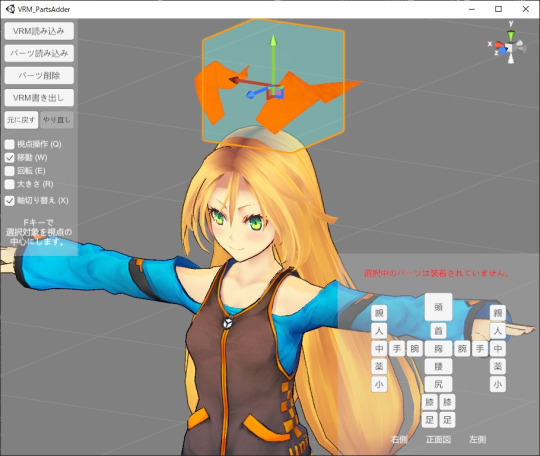
Texture Replacer DL
Able to fix textures of the said props if they are missing.
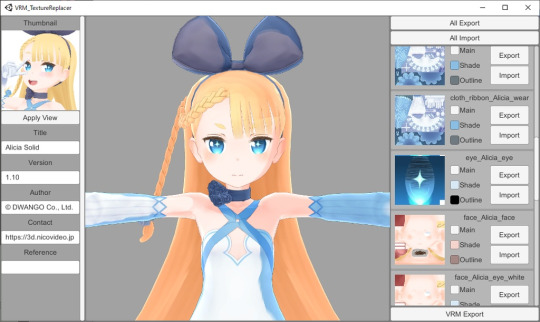
Hana App DL
Able to add 52 blendshapes for PerfectSync without using Unity.

VNyan DL
VNyan is an 3D animating software.

VtubeReflect DL
VtubeReflect captures your desktop and projects light onto your vtuber avatar.
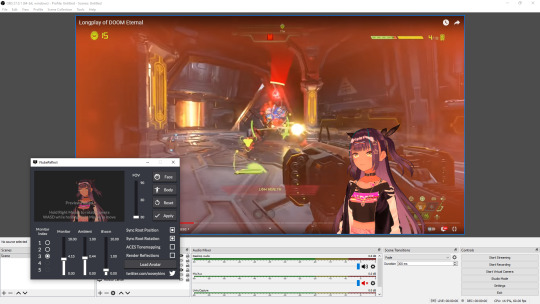
Craft2VRM DL
Use Minecraft skin as a vtuber model.

Dollplayer DL
Able to pose VRM.

ThreeDPoseTracker DL
Able to generate motion data based on video.
VDraw DL
Able to show drawing and using keyboard animation through VRM.
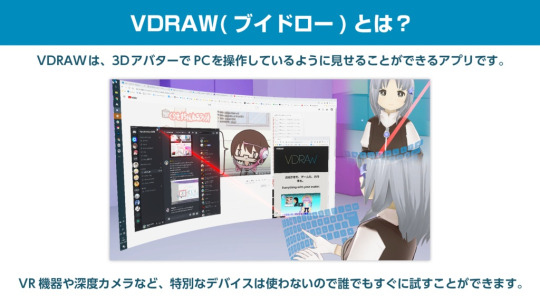
VMagicMirror DL
Able to show drawing and using keyboard animation through VRM.
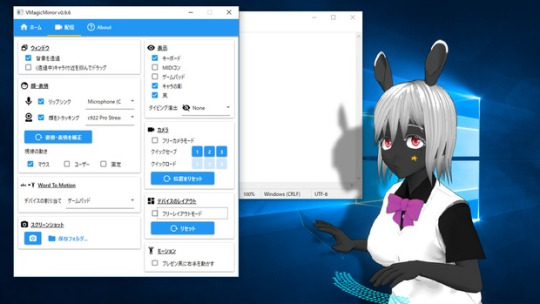
Virtual Motion Capture DL
Track avatar movement through VR.
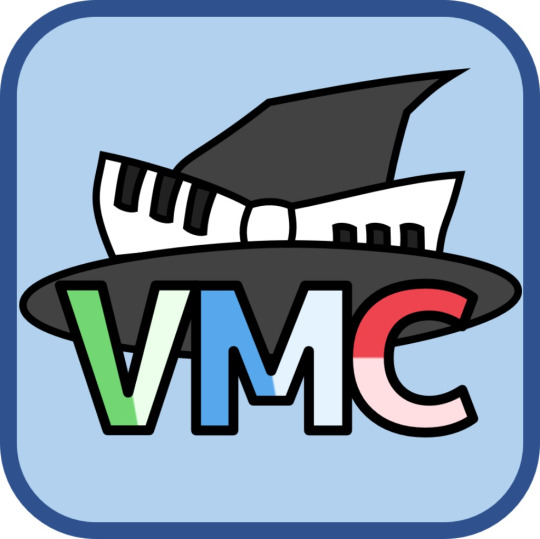
Mechvibes DL
One of the only free applications that'll let you to change the sound of your keyboard into anything!

Gigapixel DL
Picture upscaler.

Clipchamp DL
Free text-to-speech tools.
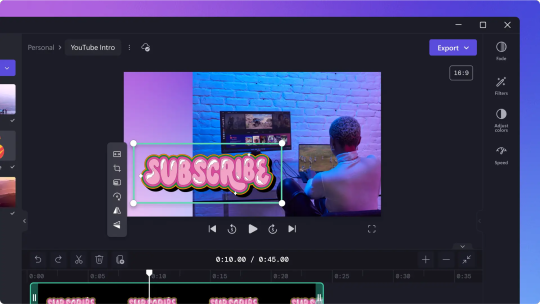
Rekonise LINK
Content creator tools.

VRoom LINK
Places your VRM in a world.
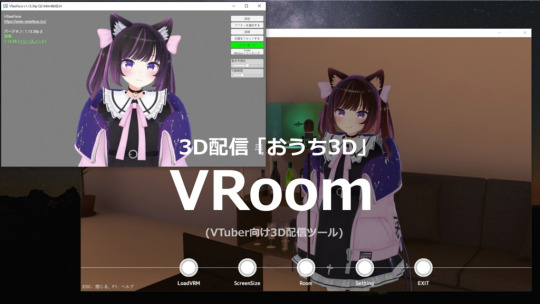
VRM games LINK
List of games/applications that allow the import of VRM.
4 notes
·
View notes
Text
VR
What is a Makey Makey? A makey makey is a kit that is made to connect everyday thing to a keyboard using basic electrical thing like crocodile clips USB cables to capture the key or mouse click. One example that I can name is using tin foil pads to play directional musical games.


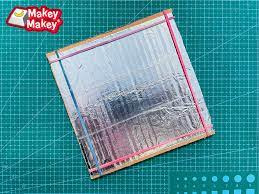
The definition of VR is virtual reality and goal of it is to make something so realistic that it feels like you are either doing that playing or either there. VR has more practical application like teaching people how to thing like when I visited the XR lab in Suffolk university I Virtually disassembled a frog.
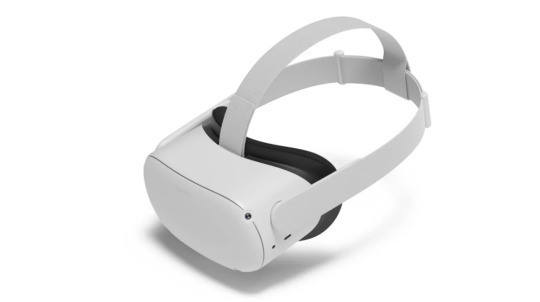
The most common use for VR is for gaming as having a VR headset and motion track controllers is that there are no animations for things so it gives the player more control over what they are doing for example blade and sorcery there are no animation for the army just where controllers are going.



Another popular VR game is beat saber in beat saber the goal to cut as many direction boxes as you can before the song ends. The player has compete control over the sword and can move them how every they like, the game also lets the player can also get other swords so they can be like darth maul if they want to.


youtube
Pavlov is first person shooter VR game that allows the player to shoot guns in single player and multi player games. The game forces the player to look thought the sights in the game in order to be able to shoot accurately, the game also registers the height of the player like in player gets low to the ground the game counts it as the player crouching.


youtube
Beamng drive is not a VR focused game but the game has VR support and allows the player to realistically drive cars and look around on the inside and if the player crashes the car will realistically take damage. (the game is better with a steering wheel).
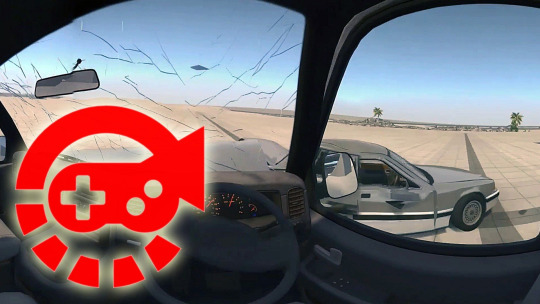
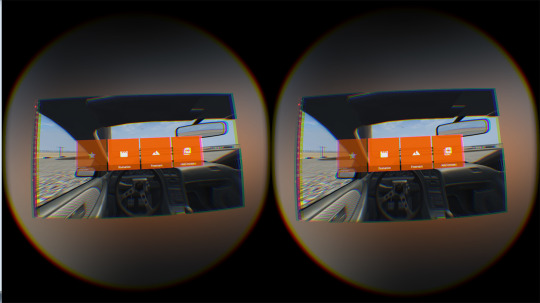
Gorilla Tag is VR game that lets players swing around like gorillas and tag each other. The game spits the players up with some players that have to tag all of the blue gorillas, the game allows the players to move there arms around and grab and grip onto things.
What are motion controls
Games use motion controls to make games feel more immersive, more realistic and more fun there are levels to this like VR pretty much relies on motion controllers where as the Wii has games that don't require it and the same with the Nintendo switch not always requiring motion controls on all games.

The Wii features motion controller for the console as mostly every game that has been on the Wii has motion features like call of duty world war for the Wii had features that required player to the remotes in a way that replicated what would somewhat have to happen in real scenario.
youtube

The Nintendo switch also uses motion controls in there games for example they motion controls in there game The cube the motion is combined with buttons to make the game function.
youtube
VR games use motion controls very heavily in games as all the games require motion controllers and every VR game uses them as that is their main form of control, however games use the controllers very differently.

Retro controllers

The Nintendo 64 controller has some distinction features like the big part that runs down the middle and the main joystick being located their. The controller has 7 buttons that the player can press and one joy stick and a directional pad. Over all the controller looks comfortable as it has a somewhat modern look and has been used as a bases for some of modern controllers like Nintendo switch controller. The controller has the unique design of the triangle in the middle.

Hyperkin Sega Genesis Controller has some distinction features like the very simple shape. The controller has 6 buttons and one directional pad. The controller looks comfortable as the controller is very simple and comfortable. The controller is unique as it has a simple shape and size for the hands.

8Bitdo NES30 Pro the a very distinctive shape as like a oval and has 4 buttons and 2 joysticks and one directional pad. The controller is very comfortable as it is very small and the buttons are easy to reach. The controller is made unique by it's size and where the buttons are located.

PS one controller has a distinctive shape as it has two part that sits I the hands perfectly. The controller has ten buttons are located in a comfortable place at the top and a easy to reach from the thumb.

Mobile platform games
Doodle jump is 2D platformer where the player is tasked with getting as far as they can and setting the highest score. The game has simple gyro controls allowing the player to tilt the their device left and right to control and the only use of the screen is tapping to shoot down enemies. The game is made unique by this simple form of control and the simplicity of the gyro controls. I like the idea of having a score based system where the the game ends when the player dies it show the highest score.
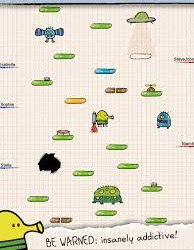


jet pack joyride is a 2d platformer/endless runner. The controls are press and hold to make the character move up and down. This game is made unique by the concept that it is based of a man is messed over by a company is steels their mini gun jet pack and takes it for a joyride. I would like to use a score system similar to this and the endless ness from it.
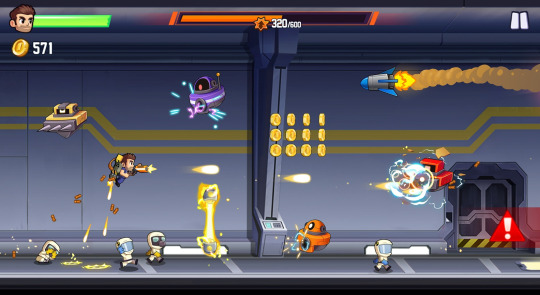


Jonny trigger is 2D platformer with a few twists like the only controls are tapping and holding to fire when the shot is lined up. The game does have paid for elements like cosmetics and monthly subscriptions. This game is unique by the way the game works because no matter what the character does not stop. I can possibly use the fact that the character does not stop.



Dead Cells is a 2D platformer that has a complete touch controls system that allows the player to control the character and all of the moves the character can make. The games is made unique by the boss fights as the player all the control of how the character moves.
youtube
Super Mario Run is very popular 2D platformer with simple touch and hold controls. The game has some paid for DLC's that the player can purchase for more levels. The game is unique as the game is super Mario simplified for other types of controls and players to play.
youtube
3 notes
·
View notes
Text
In recent years, Virtual Reality (VR) and Augmented Reality (AR) have made significant strides in transforming industries, education, entertainment, and even healthcare. While both technologies are often grouped under the term extended reality (XR), they represent distinctly different experiences. This detailed comparison will explore both VR and AR in terms of their definitions, differences, applications, advantages, challenges, and potential future directions.
#Virtual Reality (VR)#Augmented Reality (AR)#Extended Reality (XR)#VR technology#AR applications#VR vs AR#Immersive experiences#AR devices#VR gaming#AR in retail#VR training simulations#AR navigation#VR headsets#AR education#Mixed Reality (MR)#VR healthcare applications#AR in marketing#AR glasses#VR development#Future of VR and AR
0 notes
Text
Why mmWave hasn't become the mainstream spectrum of 5G?
In a previous article of IPLOOK, we introduced what 5G mmWave (5G mmWave) is. Due to its wide bandwidth, abundant resources, and high frequency characteristics, 5G mmWave has significant advantages and was once considered a key frequency band for development in the early stages of 5G. However, today, although many countries and regions around the world have promoted or deployed 5G mmWave, the application of mmWave technology in the industry still faces uncertainties and challenges.
At the beginning of 2023, due to various factors, the construction progress of 5G mmWave base stations in South Korea was far behind expectations, with completion rates only ranging from 10.6% to 12.5%. In Japan, NTT DOCOMO and Rakuten Mobile experienced no growth in mmWave users, and their traffic share was relatively low. Even in the US, which began deploying 5G mmWave ahead of other countries in 2019, the availability of 5G mmWave networks is less than 1%.
Many people believe that the reason why 5G mmWave has not become the mainstream spectrum for 5G is because of its own characteristics and the unclear application demands:
Limited Range: leading to high cost
The mmWave has a small coverage radius, and the construction and operation costs for the same coverage area are high, which hinders large-scale deployment. As a result of its high frequency and large transmission loss, the mmWave has poor coverage ability, with a coverage radius of only about 150 meters for a single mmWave base station, which is only 1/5 of the coverage radius of low-frequency bands such as Sub-6. If a continuous coverage 5G mmWave network is to be built like in the 3.5GHz frequency band, the number of base stations needed would be more than twenty times greater than that of regular 5G base stations, leading to high construction costs.
Poor Penetration: resulting in poor user experience
5G mmWave has poor penetration capability and severe diffuse attenuation, resulting in poor user experience and customer dissatisfaction. There are two main reasons for this. First, the mmWave has a short wavelength (between 1-10 mm), making it poorly penetrating, as it can be blocked by leaves and water droplets. Second, the mmWave is sensitive to the surface of objects, easily causing signal energy to dissipate in multiple directions, resulting in poor signal reception at the receiving end and affecting user experience. For example, even though over 20,000 mmWave base stations have been built in Japan, customers are reluctant to pay for mmWave services due to prominent problems such as frequent signal interruptions and insufficient coverage during usage.
Lack of Groundbreaking Apps
Low-frequency mmWave has clear bandwidth advantages, but due to the lack of groundbreaking applications, its value is difficult to fully unleash in the short term. Globally, mid-to-low frequency spectrum resources are gradually becoming scarce, and more reliance is placed on spectrum re-farming and frequency coordination to solve this issue. In contrast, 5G mmWave, with its continuous and wide spectrum resources, can better achieve bandwidth capacity enhancement. However, by reason of the unclear promotion of large-scale applications such as XR and Smart Homes, and traditional video services can be satisfied with existing bandwidth, the short-term demand for mmWave is not significant.
3 notes
·
View notes
Text
Top Challenges in VR Development and How to Solve Them

Virtual Reality has transformed from a sci-fi fantasy into a rapidly growing industry, with applications spanning gaming, healthcare, education, and enterprise training. However, VR development remains a complex field filled with unique challenges that can make or break a project. Whether you're a seasoned developer or just starting your journey in VR development, understanding these obstacles and their solutions is crucial for creating compelling virtual experiences.
1. Motion Sickness and User Comfort
One of the most significant hurdles in VR development is preventing motion sickness, also known as VR sickness or simulator sickness. This occurs when there's a disconnect between what users see and what their inner ear perceives, leading to nausea, dizziness, and discomfort.
The Solution: Maintaining a consistent 90 frames per second (FPS) is non-negotiable in VR development. Any drops below this threshold can trigger motion sickness. Implement comfort settings like teleportation movement instead of smooth locomotion, reduce acceleration and deceleration, and provide stationary reference points within the virtual environment. Consider adding comfort vignettes that gradually darken the peripheral vision during movement to reduce visual-vestibular conflict.
2. Performance Optimization Challenges
VR applications demand significantly more processing power than traditional applications because they need to render two separate images simultaneously while maintaining high frame rates. Poor performance doesn't just affect user experience—it can cause physical discomfort and safety issues.
The Solution: Optimize your VR development process by implementing level-of-detail (LOD) systems that reduce polygon counts for distant objects. Use occlusion culling to avoid rendering objects outside the user's field of view, and implement foveated rendering when supported by the hardware. Profiling tools are essential—regularly test your application across different VR headsets to ensure consistent performance. Consider using techniques like reprojection and asynchronous timewarp to maintain smooth frame rates even when the GPU is under stress.
3. User Interface and User Experience Design
Traditional UI/UX principles don't translate directly to VR development. Designing interfaces that work in three-dimensional space while remaining intuitive and accessible presents unique challenges. Users interact with VR environments using hand controllers, eye tracking, or gesture recognition, requiring entirely new design paradigms.
The Solution: Embrace spatial UI design principles in your VR development workflow. Position UI elements at comfortable viewing distances (typically 1-3 meters) and avoid placing crucial interface components at the edges of the user's field of view. Implement clear visual feedback for interactions, use familiar metaphors like buttons and sliders adapted for 3D space, and ensure your UI elements are large enough to be easily selected with motion controllers. Always provide alternative input methods and consider accessibility from the start.
4. Hardware Fragmentation and Compatibility
The VR market features numerous headsets with different specifications, tracking systems, and input methods. Developing for multiple platforms simultaneously while ensuring consistent performance and user experience across devices is a major challenge in VR development.
The Solution: Adopt a platform-agnostic approach by using cross-platform development frameworks like Unity XR or Unreal Engine's VR template. These tools provide abstraction layers that handle device-specific implementations. Establish a testing matrix that includes the most popular VR headsets in your target market, and implement scalable graphics settings that automatically adjust based on the detected hardware capabilities. Consider using OpenXR, an open standard that provides a unified API for VR development across multiple platforms.
5. Spatial Audio Implementation
Audio plays a crucial role in creating immersive VR experiences, but implementing convincing spatial audio that accurately represents sound sources in 3D space is technically challenging. Poor audio implementation can break immersion and reduce the overall quality of the VR experience.
The Solution: Integrate spatial audio engines like Steam Audio, Oculus Audio SDK, or Unity's built-in spatial audio system into your VR development pipeline. These tools provide realistic sound propagation, room acoustics, and head-related transfer functions (HRTF). Position audio sources accurately in 3D space and implement proper attenuation curves. Test your audio implementation with different headphones and speakers to ensure compatibility across various audio setups.
6. Content Creation and Asset Pipeline
Creating high-quality 3D assets for VR requires specialized knowledge and tools. VR development demands detailed textures, complex 3D models, and optimized assets that maintain visual fidelity while meeting strict performance requirements.
The Solution: Establish a robust asset pipeline that includes automatic optimization processes. Use texture compression techniques appropriate for your target platforms, implement efficient UV mapping strategies, and create multiple LOD versions of complex models. Consider using photogrammetry and 3D scanning for realistic environments, but always optimize the resulting assets for VR performance requirements. Implement version control systems specifically designed for binary assets to manage your growing content library effectively.
7. Testing and Quality Assurance
Traditional software testing methods are insufficient for VR development. VR applications require physical testing with actual hardware, and issues like motion sickness or tracking problems can only be discovered through hands-on testing with real users.
The Solution: Develop a comprehensive VR testing strategy that includes both automated and manual testing phases. Create diverse test environments that simulate different room sizes and lighting conditions. Establish a user testing program with participants of varying VR experience levels, physical abilities, and comfort zones. Document common issues and their solutions in a knowledge base that your development team can reference. Implement telemetry systems to gather performance data and user behavior patterns from real-world usage.
8. Keeping Up with Rapid Technological Changes
The VR industry evolves rapidly, with new hardware, software updates, and development tools emerging regularly. Staying current with these changes while maintaining existing projects is a constant challenge in VR development.
The Solution: Allocate dedicated time for research and experimentation with new VR technologies. Follow industry leaders, attend VR conferences, and participate in developer communities to stay informed about emerging trends. Implement modular architecture in your VR projects that allows for easier updates and integration of new features. Consider the long-term implications of technology choices and build flexibility into your development roadmap.
Conclusion
VR development presents unique challenges that require specialized knowledge, tools, and approaches. Success in this field comes from understanding these obstacles and implementing proven solutions while staying adaptable to the rapidly evolving VR landscape. By addressing motion sickness, optimizing performance, designing intuitive interfaces, managing hardware compatibility, implementing spatial audio, streamlining content creation, establishing comprehensive testing procedures, and staying current with technological advances, developers can create compelling VR experiences that truly immerse users in virtual worlds.
The key to successful VR development lies in thorough planning, continuous testing, and a deep understanding of how humans interact with virtual environments. As the technology continues to mature, these challenges will evolve, but the fundamental principles of user-centered design and technical excellence will remain crucial for creating exceptional VR experiences.
#gaming#mobile game development#multiplayer games#metaverse#blockchain#unity game development#vr games#game#nft
0 notes